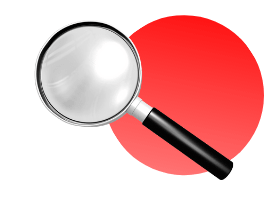KPI (key performance indicators) are indicators that affect the quantitative or qualitative change in the results in relation to the goals set.
Those. KPIs are designed to serve as a tool for assessing the achievement of goals.
Stages of building an assessment system based on KPI
1. Determining the desired results of activities (setting goals)
2. Determination of indicators that allow you to control the process of achieving the desired performance results (definition of KPI)
3. The system of accounting indicators for material incentives for personnel
KPI-based assessment can be based on functional areas of responsibility (groups of tasks that need to be performed at the workplace). Functional areas of responsibility should follow from the strategic goals of the company, decomposed into the activities of specific departments and positions in the department.
There are also project KPIs that are associated with the achievement of specific project goals, limited by the implementation timeframe.
SMART goals
Your attention is invited to formulate goals with the help of the SMART goals technology accepted all over the world. Here is the well-known transcript:
Specific - specific
Measurable - measurable (quantitatively or qualitatively)
Achievable - achievable
Relevant - bringing results (significant)
Time-bound - limited in time
Goal Setting Examples
An example of a correct goal setting: Increase the number of positive customers by 10% compared to 2010 according to the results of the survey by 01.12.2011.
KPIs themselves, based on the definition, can be quantitative (measured by numbers) and qualitative (measured by compliance with the requirements of a certain regulatory document).
And here is an example of a KPI for the "Personnel" department in relation to the tasks performed in this area:
| Tasks | KPI |
| reduction in staff turnover | — staff turnover % per year |
|
organizational structure optimization |
— the presence of a formalized organizational structure of the company
— compliance of the organizational structure with the current goals and objectives of the company |
| development of profiles for key positions in the Company | — Availability of job profiles for N % of jobs
— matching the profile to the established template |
| selection | — closing of existing vacancies N % or from the need
— compliance of new employees with the requirements of the position profile |
| staff development |
— training costs rub. for 1 person in year — increase in the level of professionalism in % |
| grade |
— compliance with the requirements of the assessment regulation — the number of assessed employees |
| attestation | — formation of a personnel reserve N people per year — compliance of the procedure with the regulation on certification |
|
motivation |
— the presence of a formalized system of material and non-material incentives — employee satisfaction index |
| personnel office work | — compliance with legal requirements — the number of completed documents |
A systematic approach to management by objectives is based on the fact that the assessment of key performance indicators should contribute to the solution of the following tasks:
1. Translate goals into the category of measured parameters
2. Monitor the process of achieving goals
3. Determine the reasons for not achieving goals
(if it did happen)
4. Objectively (on the basis of measured parameters) evaluate the activities of the staff and stimulate achievements.
Stages of the project for the development and implementation of KPI in the company
The project work on the development of key performance indicators of structural units - KPI is divided into the following stages:
| № | Stage name | Timing | Result |
| Stage 1 |
Strategic session Formulate the mission, values of the company, strategic goals for the development of the company and determine the ways to achieve them (qualitative and quantitative indicators) |
2 days | - Formulated the goals of the company and departments, which will form the basis of KPI |
| Stage 2 | Clarification of the responsibility of structural units for business processes and functions | 5 days | -Organizational and functional model; responsibility matrix, list of functions by positions |
| Stage 3 | Development of key performance indicators and scorecards for departments (positions) | 10 days |
- Lists of corporate indicators for each position, which are affected by the structural unit, position; - Table of planned values - Scorecards for positions |
| Stage 4 | Development of a system for monitoring the work of structural units and a motivation system based on key performance indicators - KPI | 10 days |
- Lists of indicators of structural units included in the motivation system -List of indicators indicating contributions -Methods for calculating the bonus fund of structural divisions -Description of rules and mechanisms -Regulatory documents |
| Stage 5 | Training the company's staff to use the KPI system | 1 day | -Technology transfer |
| Stage 6 | Implementation (trial operation) | 1 day | -Adjust as needed |
The cost of services is discussed individually.
In case of your interest, we will be happy to meet with you and tell you about us, our capabilities, experience and how we can be useful to you, tell you about the experience of events held, and show customer reviews.













